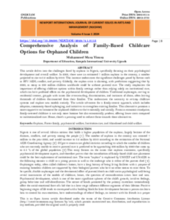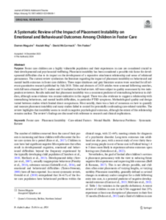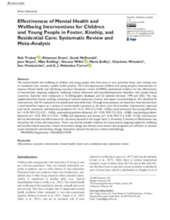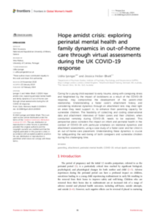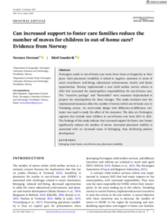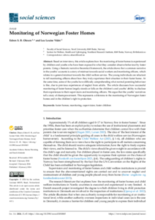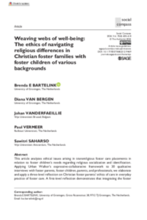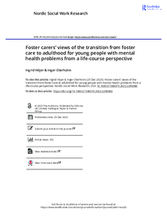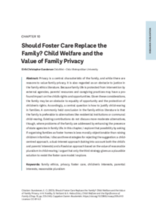Displaying 51 - 60 of 2214
This article delves into the challenges faced by orphans in Nigeria, specifically focusing on their psychological development and overall welfare. The article advocates for a family-centric approach, which includes adoption, community-based upbringing, and initiatives to strengthen existing families.
The current review synthesizes the literature regarding the impact of placement instability on behavioural and mental health outcomes in foster care children. Three major databases and grey literature sources were searched for all relevant quantitative research published by July 2019.
The purpose of this CHIMES review and meta-analysis was to evaluate the effectiveness of interventions evaluated via randomized controlled trials (RCTs) for improving mental health and wellbeing outcomes for care experienced children and young people.
This perspective piece considers the impact on infant and perinatal health in the context of COVID-19 with particular emphasis on relational dynamics and attachment assessments, using a case study of a foster carer and her child in an out-of-home-care placement. Understanding these dynamics is crucial for safeguarding the well-being of both caregivers and vulnerable children during this challenging time.
Norwegian youth in out-of-home care move three times as frequently as their peers. Such placement instability is linked to negative outcomes in terms of social attachment, well-being, educational achievements, health, and future opportunities. Norway implemented a new child welfare service reform in 2022 that increased the municipalities responsibilities for out-of-home care. This study evaluates how the implemented measures affect the number of moves within out-of-home care in Trøndelag county. Norway.
This article explores how the monitoring of foster homes in Norway is experienced by children and youths who have been exposed to what they consider abusive behaviour by foster parents. Using a thematic narrative theoretical framework, the article shows that a common narrative in the youths’ accounts is a story of mistrust towards social workers and monitoring officers, which relates to a general mistrust towards the child welfare service.
This article analyzes ethical issues arising in transreligious foster care placements in relation to foster children’s needs regarding religious socialization and identification. Applying Urban Walker’s expressive-collaborative framework to 30 qualitative interviews with foster parents, foster children, parents, and professionals, the authors elaborate and apply a three-level reflection on Christian foster parents’ ethics of care in everyday practice of foster care.
This article aims to build knowledge, from a life-course perspective, of foster carers’ views of the transition from care to adulthood for young people with mental health problems by interviewing carers from foster homes in Norway and Sweden.
This paper discusses the role of social workers and community volunteers in providing services to foster care children living with HIV in South Africa.
In this chapter in the book "Child Welfare and the Value of Family Privacy", the author discusses moderate alternatives to address problems of the family by enhancing the presence of state agencies in family life. The author asks if organising families as foster homes is less morally objectionable than raising children in families by examining the child welfare system in Norway.

